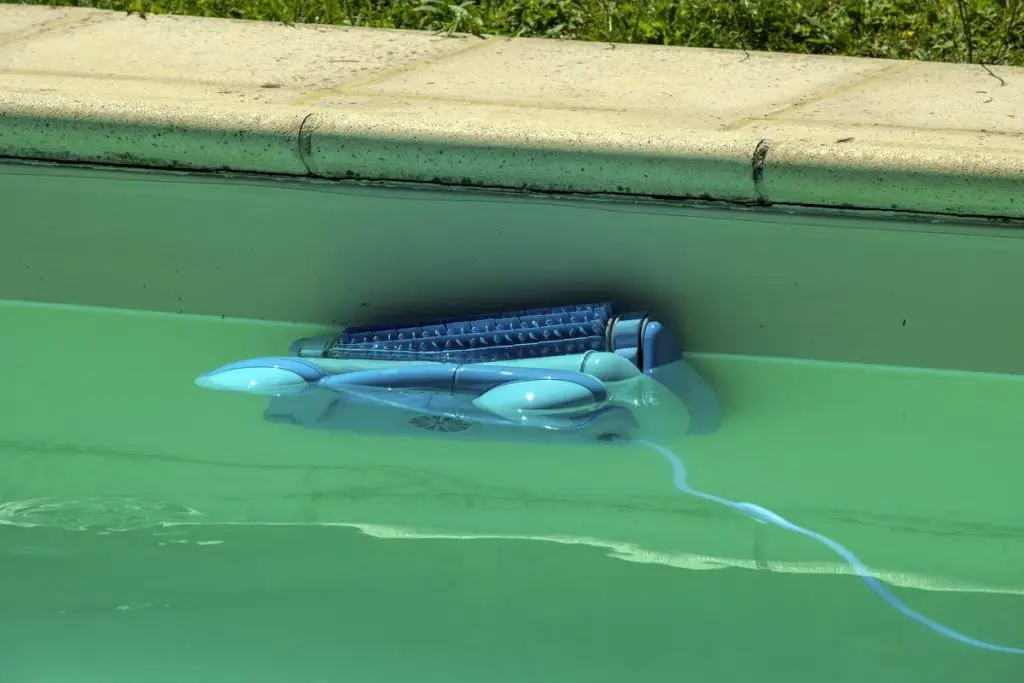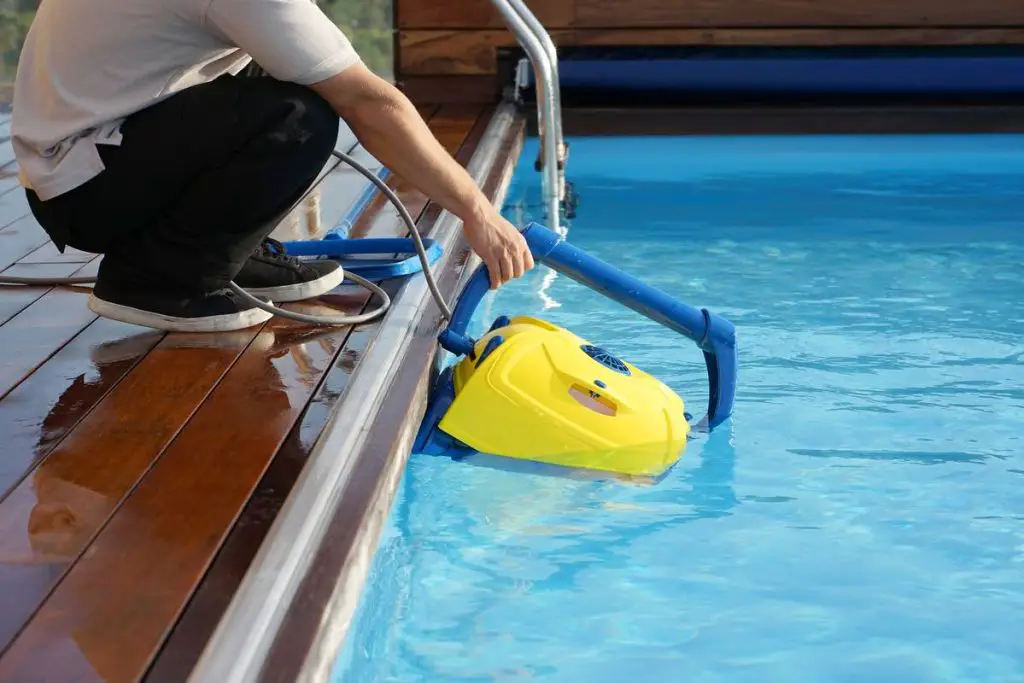Pool robots significantly reduce the time and effort it takes to keep a swimming pool clean and safe to swim in. Sometimes, however, these automated pool cleaners don’t perform as expected. A common malfunction is a pool robot that doesn’t climb your pool walls, even though it should.
Your pool robot may not be climbing the walls of your pool because of an algae build-up. Algae can cause the robot to slip on the walls and not climb properly. A full filter bag, suction problems, and hardened tracks are other common reasons why a pool robot isn’t climbing the walls of a pool.
The rest of this article will go into more detail about why your pool robot isn’t climbing the walls of your pool and how you can fix it.

1. There’s Algae Build-Up in Your Pool
Pool algae is not good for anybody trying to maintain a clean and inviting swimming pool. Not only is it unattractive and unhygienic, but it could also be the reason your pool robot isn’t climbing the walls of your pool.
When algae accumulate in a swimming pool, it can create a slippery surface that makes it difficult for a pool robot to get traction. In addition, the build-up of algae can reduce the efficiency of the robot’s brushes, making it harder for the device to clean the pool effectively.
How To Fix
Pool algae can harbor harmful bacteria, which poses a health risk to swimmers. Algae build-up should always be addressed, regardless of whether it affects your pool robot or not.
Here are a few ways to prevent algae buildup in your swimming pool.
- Improve the water circulation. Poor water circulation is one of the main reasons why algae build-up occurs in the first place. By improving circulation, you can help to prevent algae from accumulating on the walls of your pool.
- Clean the walls of your pool regularly with a stiff-bristled brush. This will help to remove any algae that has already accumulated on the surface.
- Use an algaecide to prevent new algae from taking hold. Algaecide, when used correctly, can be effective in getting rid of pool algae.
These simple steps allow you to keep your pool clean and safe for swimming all season long while making it easier for your pool robot to do its work.
2. The Filter Bag Is Full
Another common reason for a pool robot malfunction is a full filter bag. The filters could also be clogged with tiny particles of dirt that are invisible to the naked eye. As a result, the robot may have difficulty climbing walls or getting into tight corners.
How To Fix
A full filter bag is an easy problem to fix. Simply check the filter bag and empty it if necessary. To get rid of fine particles of dirt, machine wash the filter bag with a gentle detergent and bleach.
With an empty filter bag, your pool robot should work like a brand-new machine. However, if the problem persists, it may be necessary to replace the filter bag altogether.
3. The Tracks Have Hardened Due to Inactivity
Over time, your pool robot’s tracks can become hardened and brittle due to inactivity. When this happens, your robot won’t be able to grip the floor or walls, making it harder for it to move. This commonly occurs when the robot is stored for an extended period without being used.
How To Fix
Follow these steps to clean your tracks if they’ve become hardened:
- Remove the robot from the pool.
- Use a soft brush to clean the tracks. Be sure to brush in the direction of the arrows on the tracks.
- Rinse the tracks off with water.
- Dry the tracks before putting the robot back in the pool.
If the problem persists after cleaning the tracks, there may be something wrong with the robot itself. In this case, it’s best to contact the manufacturer or an authorized dealer for advice.
4. The Robot Has Developed Suction Problems
Pool robots often stop climbing pool walls because of issues with suction. Over time, their brushes and wheels can get covered in dirt and debris. This build-up can cause the robot to lose suction.
An old robot can also develop problems with suction on its own as its inner mechanisms become brittle and break.
How To Fix
If your pool robot has lost suction, a thorough cleaning could help get rid of the issue. Check the brushes and wheels for dirt build-up and clean them off with a brush or cloth. You may also need to replace the brushes or wheels if they’re too worn down.
You should also check the inside and outside of the robot for signs of damage. Take your robot to an authorized dealer for further assistance if you spot any cracks, broken bits, or other damage.
5. You’re Dealing With a Used Robot
Over time, the brushes and wheels of a pool robot wear down with frequent use until, eventually, they just don’t work as well as they used to.
If you’re dealing with a used pool robot, there’s a chance that it now has significant wear and tear, and the previous owner hasn’t been completely honest about its working condition.
How To Fix
If you’re having trouble getting your used pool robot to climb the walls, consult the previous owner to clarify the issue. You might also want to double-check your robot’s model specifications: most above-ground pool cleaners only clean pool floors and don’t climb walls.
If you have an above-ground pool cleaner, you’ll need a new robot that fits your needs. There are many different types and models of pool-cleaning robots: do your research before making a purchase. That way, you can be sure you’re getting the right robot cleaner for your pool.

Summary
Pool robots are an effective way to keep your pool clean, but like most technology, they don’t always work the way they’re supposed to. Algae build-up is the most common reason why a robot doesn’t climb the walls of a pool. Clogged filters, hardened tracks, suction problems, and worn-out parts are also typical causes of a robot malfunction.
Make sure your robot is designed to clean pool walls and not just the floors, especially if you’ve purchased a used robot.
With some troubleshooting, you should be able to get your robot cleaning your pool walls again in no time!
